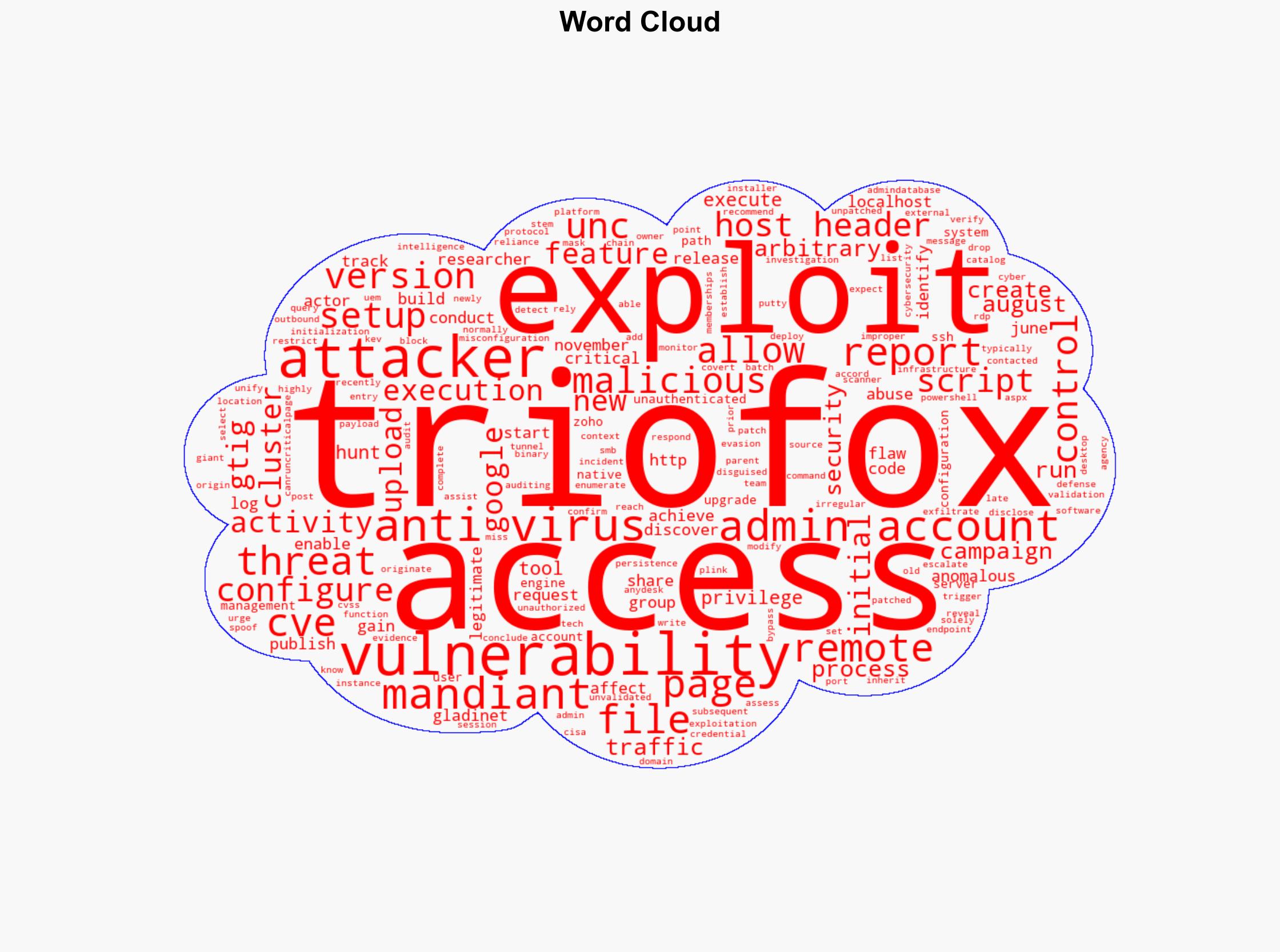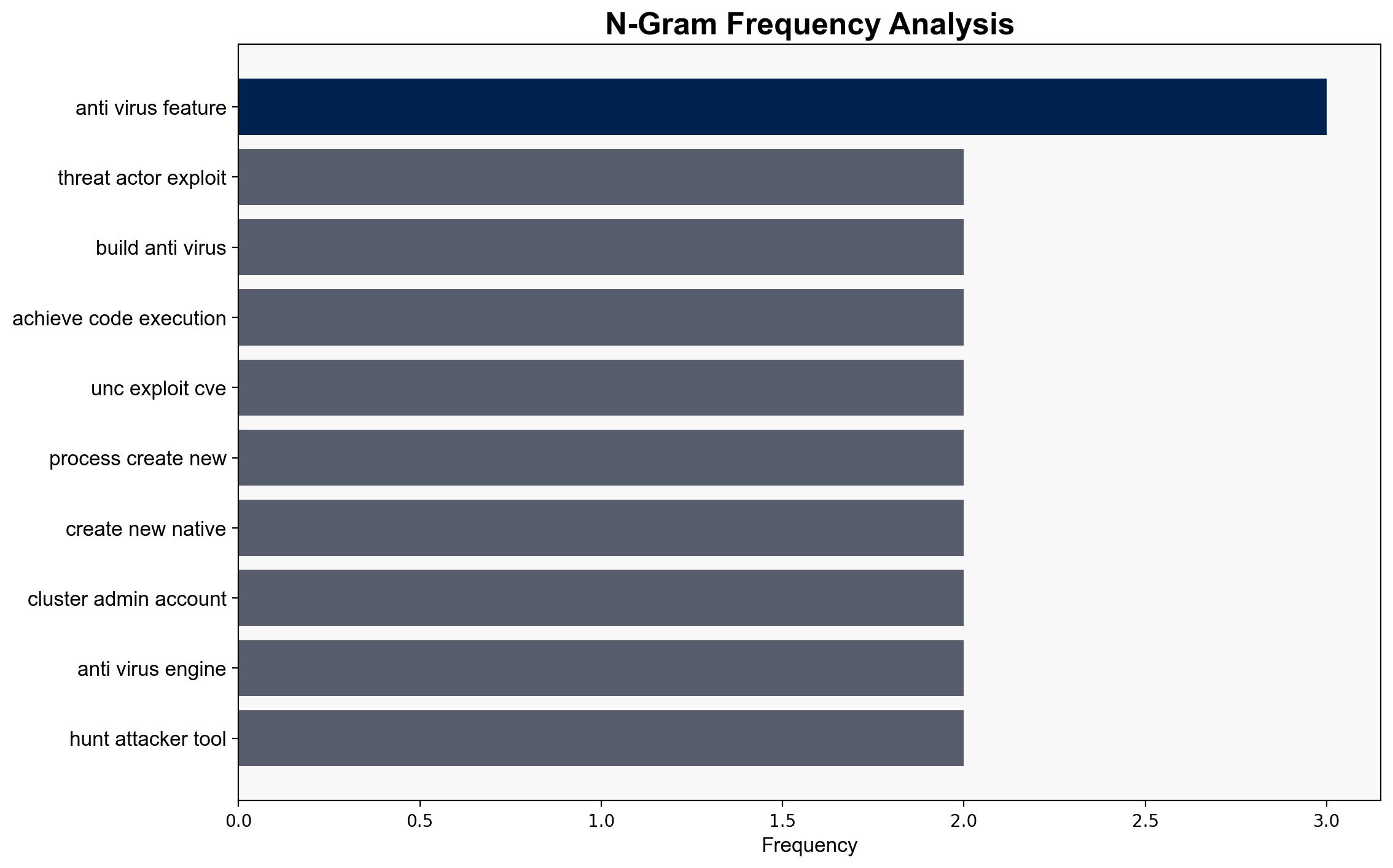Hackers Exploit Critical Flaw in Gladinet’s Triofox File Sharing Product – Infosecurity Magazine
Published on: 2025-11-11
AI-powered OSINT brief from verified open sources. Automated NLP signal extraction with human verification. See our Methodology and Why WorldWideWatchers.
Intelligence Report: Hackers Exploit Critical Flaw in Gladinet’s Triofox File Sharing Product – Infosecurity Magazine
1. BLUF (Bottom Line Up Front)
With a high confidence level, the most supported hypothesis is that a sophisticated threat actor group is exploiting an unpatched vulnerability in Gladinet’s Triofox to gain unauthorized access and escalate privileges within targeted networks. Immediate action is recommended to patch vulnerable systems, audit administrative accounts, and monitor for indicators of compromise.
2. Competing Hypotheses
Hypothesis 1: A state-sponsored threat actor is exploiting the vulnerability to conduct espionage and gather sensitive information from high-value targets.
Hypothesis 2: A financially motivated cybercriminal group is exploiting the vulnerability to gain access to corporate networks for ransomware deployment or data theft.
Hypothesis 1 is more likely due to the sophisticated nature of the exploit, the use of advanced tools like PowerShell and SSH tunneling, and the potential targeting of specific high-value entities. The complexity and precision of the attack suggest capabilities beyond typical cybercriminal groups.
3. Key Assumptions and Red Flags
Assumptions: It is assumed that the threat actors have advanced technical capabilities and access to resources that allow for the development and deployment of sophisticated exploits. It is also assumed that the vulnerability was not widely known or exploited prior to the reported incidents.
Red Flags: The timing of the exploit campaign starting shortly after the vulnerability was disclosed and patched suggests potential insider knowledge or rapid adaptation by the threat actors.
Deception Indicators: The use of legitimate software tools like Zoho Assist and AnyDesk to mask malicious activity could indicate attempts to blend in with normal network traffic and avoid detection.
4. Implications and Strategic Risks
The exploitation of this vulnerability poses significant risks to organizations using Triofox, including unauthorized data access, potential data breaches, and disruption of operations. If the threat actors are state-sponsored, there could be broader geopolitical implications, including increased tensions and retaliatory cyber actions. The use of advanced techniques to maintain persistence and evade detection suggests a high level of threat sophistication, increasing the risk of further exploitation of similar vulnerabilities.
5. Recommendations and Outlook
- Actionable Steps: Organizations should immediately apply the latest patches to Triofox, conduct thorough audits of administrative accounts, and enhance monitoring for unusual network activity. Implementing robust access controls and network segmentation can further mitigate risks.
- Best Scenario: Organizations quickly patch vulnerabilities and enhance security measures, preventing further exploitation and minimizing impact.
- Worst Scenario: Continued exploitation leads to significant data breaches and operational disruptions, with potential geopolitical fallout if state-sponsored actors are involved.
- Most-likely Scenario: Organizations experience isolated incidents of exploitation, leading to increased awareness and improved cybersecurity postures over time.
6. Key Individuals and Entities
No specific individuals are named in the report. Key entities include Gladinet (Triofox developer), Google Threat Intelligence Group (GTIG), and Mandiant (researchers).
7. Thematic Tags
Cybersecurity
Structured Analytic Techniques Applied
- Adversarial Threat Simulation: Model and simulate actions of cyber adversaries to anticipate vulnerabilities and improve resilience.
- Indicators Development: Detect and monitor behavioral or technical anomalies across systems for early threat detection.
- Bayesian Scenario Modeling: Quantify uncertainty and predict cyberattack pathways using probabilistic inference.
Explore more:
Cybersecurity Briefs ·
Daily Summary ·
Methodology





